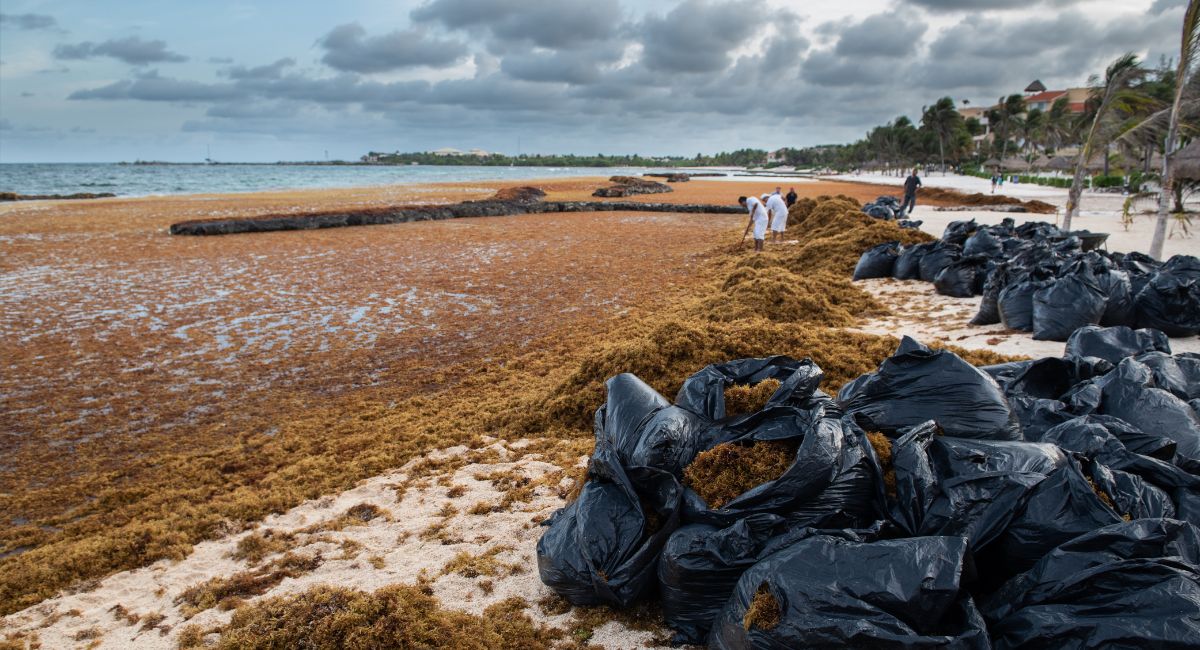A huge amount of seaweed, approximately 135 tons, is expected to wash up on the calm waters of the Mexican Caribbean this week. The arrival was originally expected between April 6 and 11, but temperatures dropped in the region beaches are being cleaned upthe arrival shifted to this week.
Popular beaches such as Tulum, Xcacel, Playa del Carmen and Cozumel will be hit by modern levels of sargassum, with the bulk of the sargassum expected after Monday, April 15. As such, the secretary of the Navy’s Gulf and Caribbean Oceanography Institute has escalated things to a category two warning for sargassum.
Source: Traveling Lifestyle
This is typical of the region, as Mexico’s sargassum season begins in April and extends into August, but visitors should still be wary. Although the Navy led efforts to collect the algae at sea and installed 8,650 meters of protective barriers to prevent mass strandings, sargassum will still land on shore.
The tourism sector influences both the aesthetics of the beach and its usability and is very attentive to cleaning the beaches as best as possible to protect both visitors and locals. There are community and government efforts across the region to clean up the beaches.
One bit of good news, however, is that there is much less sargassum on the beaches than in 2023, mainly due to the low temperatures in the ocean that do not allow the algae to reproduce uncontrollably.
In mid-March, 800 tons less sargassum was collected than in the same period in 2023, meaning Mexican Caribbean beaches are cleaner than in previous years.
A reminder for those who haven’t encountered sargassum before: when sargassum decomposes, the hydrogen sulfide gas produced makes it smell like rotten eggs. It is more harmful than the smell and can cause the skin to turn red and develop an itchy rash.
The naturally occurring brown seaweed consists of gas-filled structures that keep the brown seaweed afloat. And it is the strong currents and winds that wash the sargassum to the coast.





